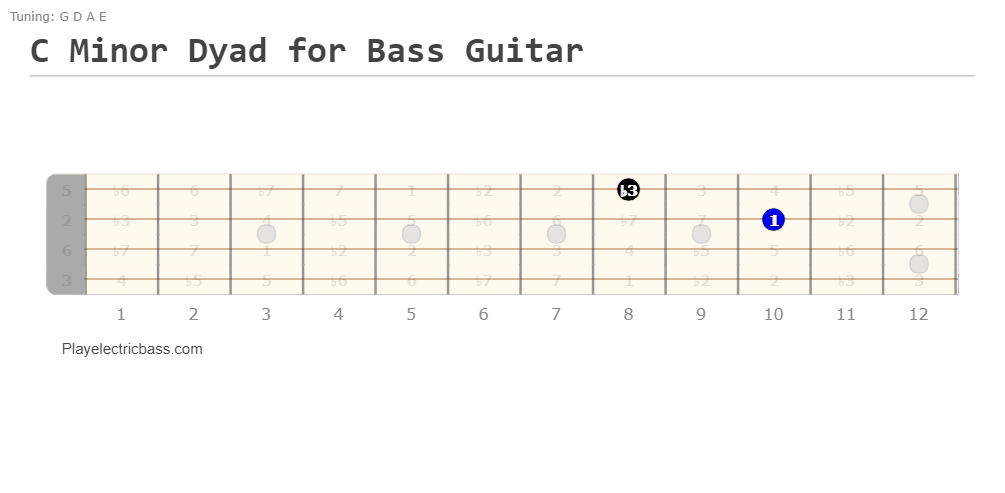Major 3rd and minor 3rds are essential to remember for bass guitar.
You’ll learn how to play major and minor dyads on bass by looking at the chord diagrams below.
How to play the C major dyad on bass
To play a C major dyad:
- Put your ringer finger on the 10th fret of the D string (the C note)
- Put your middle finger on the 9th fret of the G string (the E note)
This gives you a root and major 3rd, hence the name “major dyad”.

How to play the C minor dyad on bass
To play a C minor dyad:
- Put your ringer finger on the 10th fret of the D string (the C note)
- Put your index finger on the 8th fret of the G string (the Eb note)
This gives you a root and minor 3rd, hence the name “minor dyad”.

How to use major and minor dyads on bass guitar: Quick answer
You can use the major dyad to substitute a root note in any major key.
And, you can use the minor dyad to substitute a root note in any minor key.
What’s next?
Now that you’ve learned how to play major and minor dyads on bass, you can learn how to use major 10ths and minor 10ths! They’re very useful and common, so make sure you check out that lesson about them.
